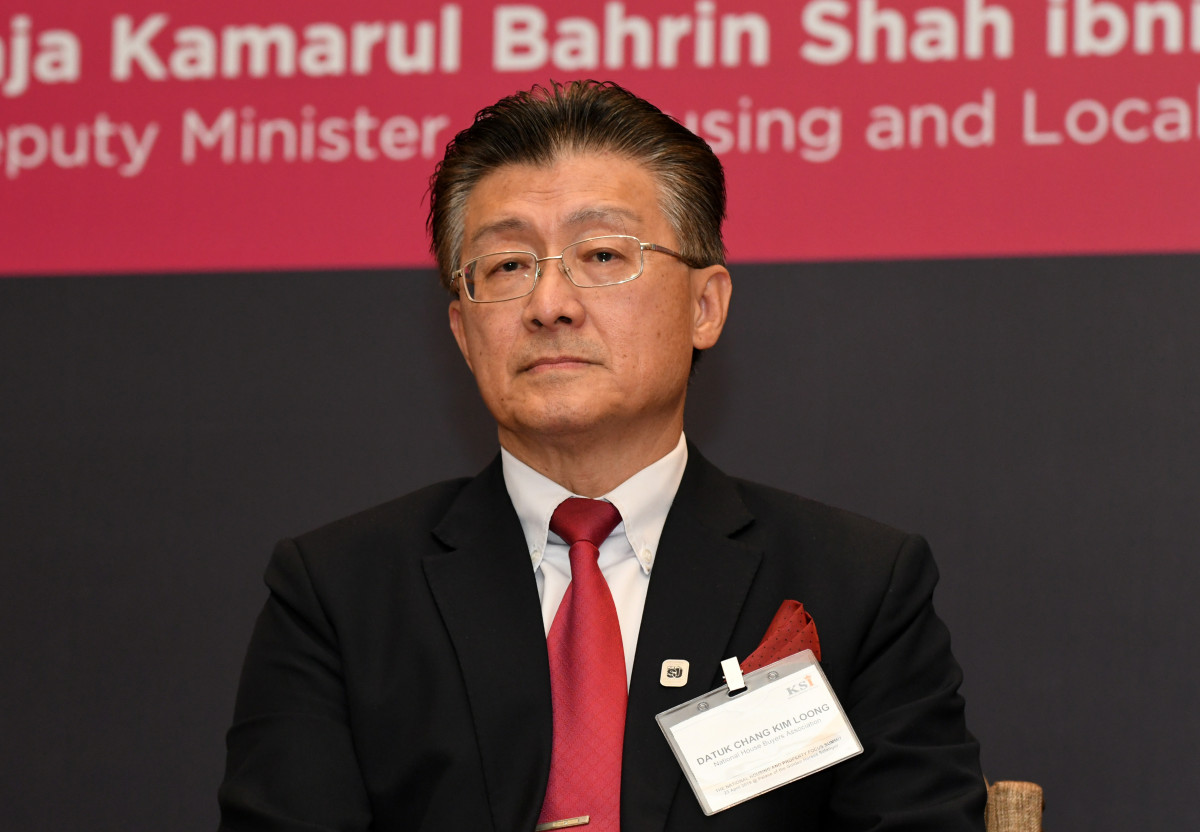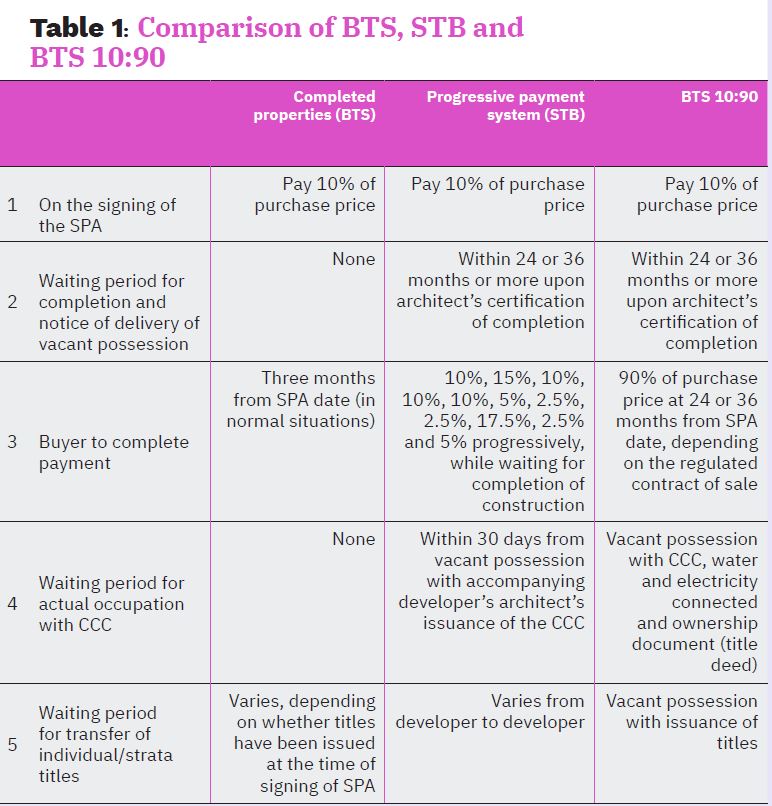According to earlier news reports, the Housing and Local Government Minister Datuk Seri Reezal Merican Naina Merican said there are only four developers in Malaysia capable of carrying out the build-then-sell (BTS) concept.
During the Parliament session on Oct 7, the Minister also added that BTS is one of the more preferred methods in selling houses.
Before we go any further, we would like to point out that there seems to be some confusion about the BTS and its variant, the BTS 10:90. The fact is, there are marked differences between the two.
In the absolute BTS system, developers can only sell finished products that are ready for buyers to occupy, as opposed to the conventional sell-then-build (STB) system, where buyers pay 10% of the house price, followed by progressive payments as the developers build.
On the other hand, under the BTS 10:90, buyers pay 10% upon signing the sale and purchase agreements (SPA), and the balance 90% only when the houses are completed with separate titles, Certificate of Completion and Compliance (CCC), water and electricity connected, and house keys. In short, it is a hybrid between the STB and the absolute BTS.
Under the absolute BTS aka 0:100 concept, the wealthy (we presume the Minister was referring to the group of these four housing developers) will be in better positions whereas the financially weaker developers will face difficulties.
However, the version we hope the government will adopt is not the absolute BTS, but the BTS 10:90.
In Professor Nor’Aini Yusof’s 2014 book, Housing the Nation: Policies, Issues and Prospects, she has given a balanced view on each of the two systems, but we believe that in her elucidation, she has presented a more positive take on the BTS 10:90 concept.
Below are some highlights from her concluding paragraph in Chapter 11, page 289:
Proponents of the BTS and STB have both been very vocal in expressing their arguments and views. The government, for whom both sides are important stakeholders, needs to weigh these views carefully. It has already expressed its commitment to make BTS mandatory by 2015.
Incentives have been introduced by the government to facilitate the BTS approach, including fast-tracking the planning approval process, waiver of deposit for the developer’s licence and an exemption for low-cost housing. But as Walczuch et al, (2007) have warned, and as past experience has shown, housing developers will undoubtedly be even more vocal and critical about BTS as we approach 2015. They will likely find excuses not to implement BTS, or at best, they will ask for more help in doing so.
The resistance to the BTS approach is certainly not helpful to the housing industry and the development of the country as a whole. Certainly, there are direct and indirect costs incurred as developers adjust to BTS, but its adoption should be viewed positively as a means to further safeguard the interests of house buyers, and perhaps further enhance or restore their trust in developers.
Closer cooperation and engagement will ultimately create a win-win situation for all stakeholders in the housing industry.
The way forward
A few public-listed and financially strong developers with developments in prime locations have adopted the BTS 10:90 concept by adopting the “Schedule I” (SPA for Land & Building) and “Schedule J” (SPA for Stratified Buildings), hence it is not a totally alien system.
Housing projects that are built and marketed using the BTS 10:90 concept need to use the statutory standard SPAs where the buyers pay 10% as deposit and only pay the balance 90% upon full completion by the developer.
The 10% paid to the developer is deposited into the Housing Development Project Account and the sale is “locked in”.
For the house buyer, it is still a purchase based on brochures and advertisement on a concept. The 10:90 concept is still a “sell first, then build” model as homes are yet to be built or completed at the time of signing of the SPA.
Just like buying a motor vehicle, there is no progressive payment due to the manufacturer. On completion, the seller delivers the product and collects the balance payment.
It is actually a midway between the present progressive payment (STB) and the complete BTS. You may call it a variant of the STB or a variant of the BTS, or “deferred payment” basis; it matters little.
However, the big difference is that if the developer, for whatever reason, fails to complete the project or abandons the project, the buyers are insulated from the developer’s business risk and possible disastrous fallout.
As can be seen from Table 1, the 10:90 payment system is still a contract to sell (through the signing of the SPA), build, then deliver. The term BTS is hence not appropriate and should not be used in its entirety, when referring to the BTS 10:90 concept as the two systems encompass substantially different characteristics.
To avoid further misconceptions and confusions, perhaps we should all refer to this model as BTS 10:90 concept rather than confusing it as an absolute BTS concept.
Datuk Chang Kim Loong is the Honourary Secretary- General of the National House Buyers Association (HBA).
HBA could be contacted at:
Email: [email protected]
Website: www.hba.org.my
Get the latest news @ www.EdgeProp.my
Subscribe to our Telegram channel for the latest stories and updates








